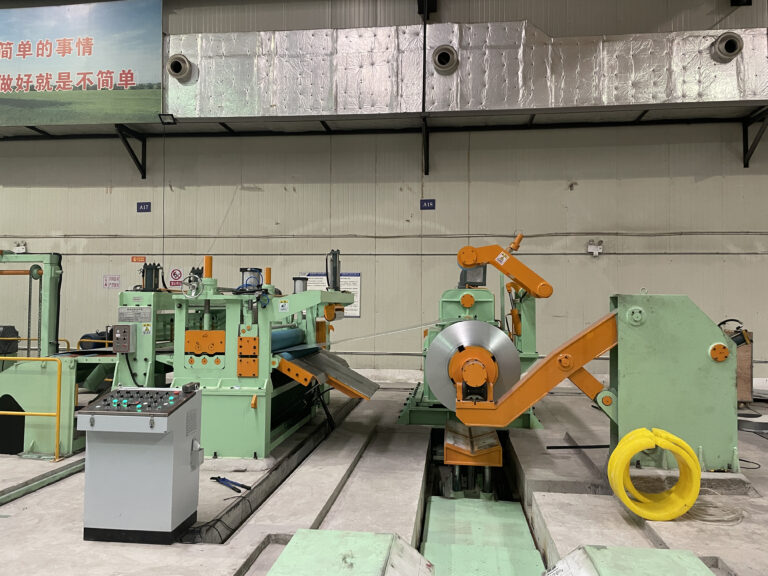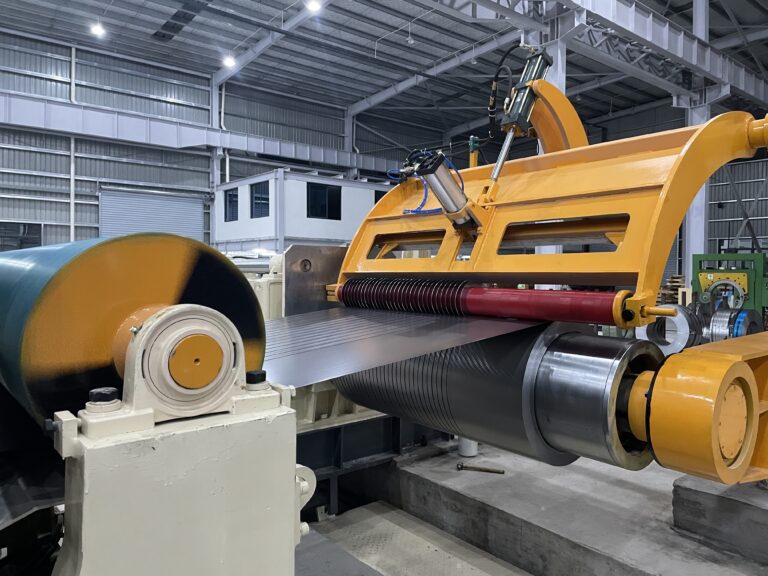Top 10 High-Speed Metal Processing Machine Suppliers 2025
The pursuit of higher processing speeds isn't simply about running existing equipment faster. It requires a complete rethinking of mechanical design, control systems, and material handling approaches.
In 2025, the frontier of high-speed metal processing extends far beyond mere acceleration of conventional equipment, embracing sophisticated engineering innovations driven by the nuanced physics of metal behavior at extreme velocities. As speeds surpass 150 meters per minute, vibrational harmonics, material inertia, and thermal responses from rapid deformation emerge as pivotal factors impacting machine design and process stability. Leading suppliers are redefining the mechanical architecture through advanced servo press technologies, rapid die change systems, and multi-zone tension control, delivering precision performance even under acceleration forces exceeding 50G, as seen when processing ultra-thin stainless steel strips at speeds up to 250 m/min.
This evolution demands a holistic integration of servo-driven controls, real-time quality monitoring, and automation, transforming what were once marginal challenges into critical engineering pillars. MaxDo Machine exemplifies this approach with its MD series, where blade engagement times are finely tuned to milliseconds, and tension variations are controlled within a 2% margin to prevent dimensional distortion during high-speed operations. These rigorously tested solutions not only preserve tight dimensional tolerances (±0.1mm) but also optimize throughput and material yield, setting the industry benchmark for reliability and efficiency in metal slitting and cut-to-length processes. Through continuous R&D and real-world application case studies, the 2025 landscape of metal processing machine suppliers is distinguished by their commitment to pushing technological boundaries while maintaining uncompromising quality standards.
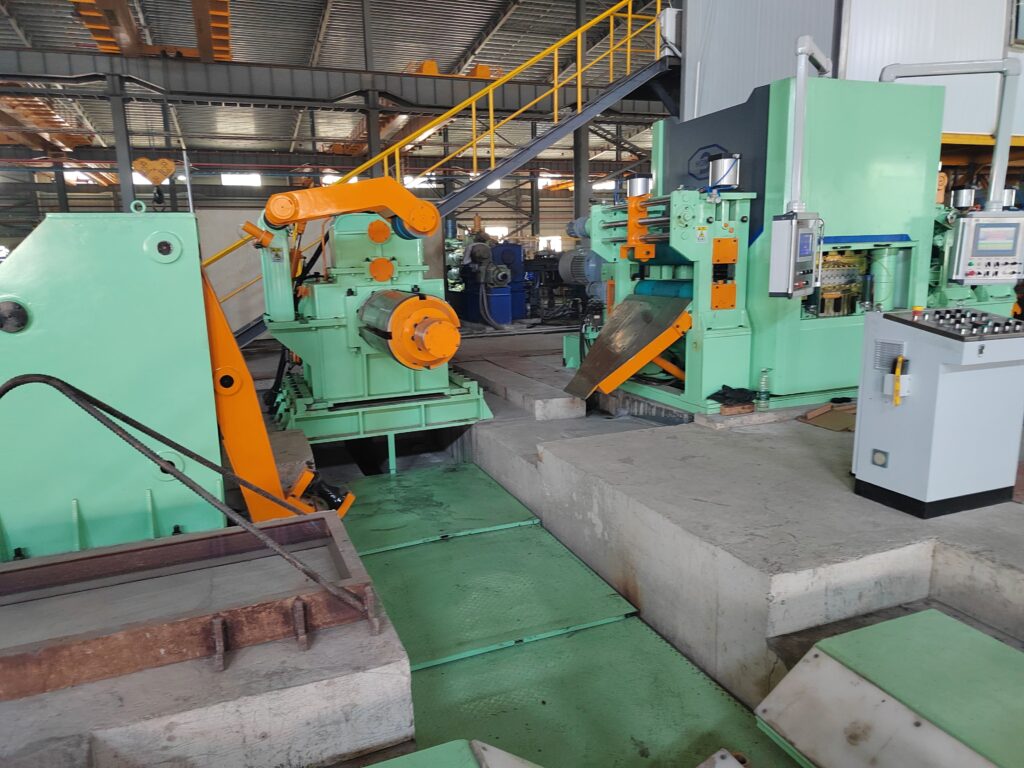
Engineering Challenges in High-Speed Processing
Dynamic Stability and Vibration Control
High-speed metal processing equipment must overcome fundamental mechanical challenges that don’t exist at conventional speeds. As processing velocity increases, even minor imbalances or misalignments create vibrations that grow exponentially. A 1-gram imbalance in a rotating component at 3000 RPM generates forces equivalent to lifting a 50kg weight.
Modern high-speed systems employ active vibration damping, precision-balanced components, and rigid machine structures designed using finite element analysis. The goal is maintaining dimensional stability while operating at speeds where conventional equipment would shake itself apart.
Material Handling at Extreme Velocities
Moving metal strip at 200+ m/min requires sophisticated material handling systems that can manage enormous kinetic energies. A 1500mm wide steel strip moving at 250 m/min carries kinetic energy equivalent to a small automobile traveling at highway speeds. Emergency stops must dissipate this energy safely without damaging the material or equipment.
Advanced systems use regenerative braking, controlled deceleration profiles, and energy absorption mechanisms to manage these forces. The material handling system becomes as critical as the processing equipment itself.
Precision Control at High Speed
Maintaining dimensional accuracy at high speeds requires control systems that can respond faster than human perception. Position corrections must occur within milliseconds, and the control system must predict and compensate for dynamic effects before they affect product quality.
Modern high-speed systems integrate predictive algorithms, high-resolution feedback systems, and advanced servo drives capable of 20,000+ position updates per second. The control system complexity rivals that of aerospace applications.
Speed Categories and Application Requirements
Ultra-High Speed Applications (250+ m/min)
These systems represent the current technological frontier, typically found in high-volume production of thin-gauge materials. Applications include electronics component manufacturing, automotive trim production, and specialized packaging materials. The engineering challenges are extreme, requiring custom solutions and significant development investment.
Production High Speed (150-250 m/min)
This range represents the sweet spot for most high-volume manufacturing applications. The technology is proven, suppliers are available, and the cost-benefit ratio is favorable for most applications. Common in automotive, appliance, and construction material production.
Enhanced Speed Processing (100-150 m/min)
While not technically “high-speed,” this range offers significant productivity improvements over conventional equipment with manageable technical complexity and investment requirements. Suitable for manufacturers upgrading from older equipment or entering high-speed processing gradually.
Standard Speed (Up to 75m/min) – 10% Market Share
- Basic processing applications
- Entry-level and budget-conscious markets
- Simple control systems and mechanisms
- Limited growth potential
By Application Industry
Automotive Manufacturing (30% Market Share)
- Body panel processing and structural components
- High-volume production requirements
- Tight tolerance and quality specifications
- Continuous operation demands
Electronics Industry (25% Market Share)
- Precision component manufacturing
- Ultra-thin material processing
- High-speed, high-precision requirements
- Clean room compatible systems
Appliance Manufacturing (20% Market Share)
- Consumer appliance component production
- Medium to high-volume processing
- Cost-effective high-speed solutions
- Flexible production requirements
Construction Materials (15% Market Share)
- Building material processing
- Large-scale production volumes
- Durability and reliability focus
- Heavy-duty processing capabilities
General Manufacturing (10% Market Share)
- Diverse industrial applications
- Custom and specialized processing
- Flexible system configurations
- Variable volume requirements
Technology Drivers for High-Speed Processing
Advanced Servo Control Systems
- Precision Motors: High-torque servo motors with precise speed control
- Advanced Encoders: High-resolution position feedback systems
- Real-Time Control: Microsecond response times for precise control
- Synchronization: Perfect coordination between multiple drive systems
Intelligent Automation
- AI Optimization: Machine learning algorithms for speed optimization
- Predictive Control: Anticipatory control systems for smooth operation
- Adaptive Systems: Real-time adjustment to material and process variations
- Quality Monitoring: High-speed inspection and quality control systems
Material Handling Innovation
- Dynamic Tensioning: Advanced tension control for high-speed operation
- Precision Feeding: Accurate material feeding at maximum speeds
- Vibration Control: Advanced damping systems for stability
- Safety Systems: High-speed compatible safety and protection systems
High-Speed Processing Technology Components
Core System Technologies
Advanced Drive Systems
- Servo Motor Technology: High-performance servo motors with precise speed control
- Variable Frequency Drives: Advanced VFD systems for optimal speed control
- Direct Drive Systems: Elimination of mechanical transmission for maximum speed
- Regenerative Braking: Energy recovery systems for efficiency and control
Precision Control Systems
- High-Speed PLCs: Advanced programmable logic controllers with fast processing
- Motion Controllers: Specialized controllers for coordinated multi-axis motion
- Real-Time Systems: Deterministic control systems with guaranteed response times
- Distributed Control: Networked control systems for complex coordination
Material Handling Systems
- Dynamic Tensioning: Advanced tension control systems for high-speed operation
- Precision Feeding: Accurate material feeding with minimal variation
- High-Speed Cutting: Flying shears and rotary cutting systems
- Automated Stacking: High-speed stacking and handling systems
Quality Control Integration
- High-Speed Inspection: Real-time quality monitoring at processing speeds
- Vision Systems: Advanced camera systems for defect detection
- Measurement Systems: Continuous dimensional monitoring and control
- Automatic Rejection: High-speed sorting and rejection systems
Safety Systems for High-Speed Operation
Advanced Safety Technologies
- Emergency Stop Systems: Category 4 emergency stops with fast response
- Safety Light Curtains: Type 4 safety systems for high-speed protection
- Speed Monitoring: Continuous speed monitoring and safety interlocks
- Predictive Safety: AI-powered safety systems with predictive capabilities
Risk Mitigation Strategies
- Comprehensive Risk Assessment: Detailed HAZOP analysis for high-speed operations
- Redundant Safety Systems: Multiple independent safety systems
- Operator Protection: Enhanced protection for high-speed environments
- Emergency Procedures: Specialized procedures for high-speed emergencies
Top 10 High-Speed Metal Processing Machine Suppliers
#1. Max Domachine (FOSHAN MAXDO SUPPLY CHAIN MGT CO., LTD.)
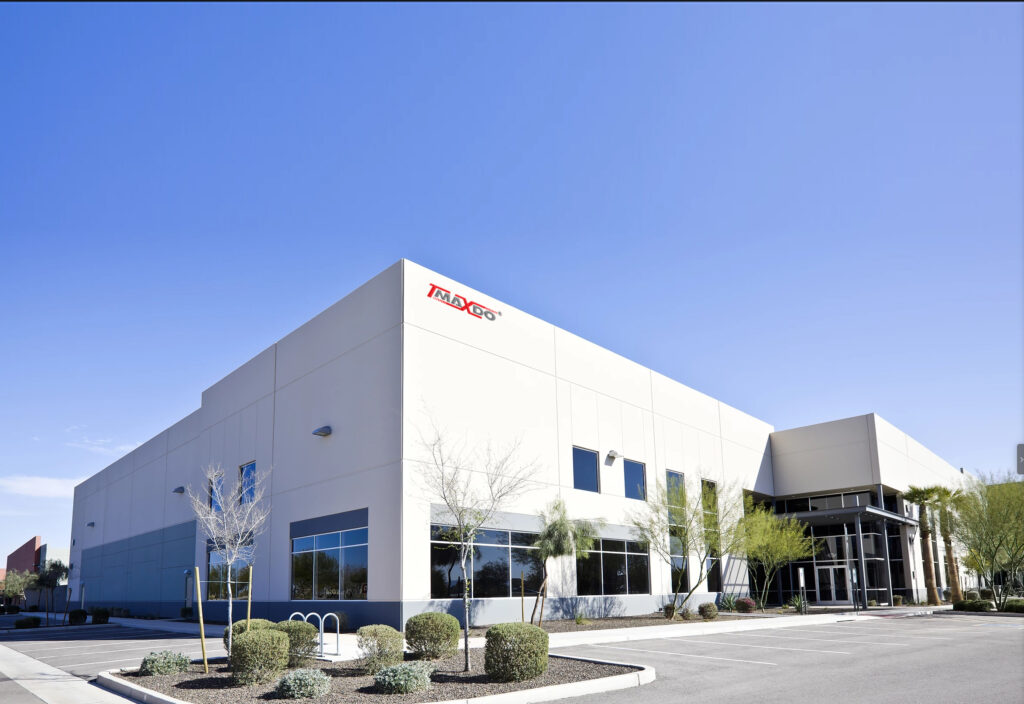
Headquarters: Foshan City, Guangdong Province, China
Founded: 2008 (Note: Company website indicates 20+ years of experience – founding date requires verification)
Specialization: Metal processing equipment with focus on cost-effective high-speed solutions
Market Position: Mid-market supplier targeting speed improvements over conventional equipment
High-Speed Processing Approach and Capabilities
Max Domachine’s approach to high-speed processing focuses on evolutionary improvements to proven designs rather than revolutionary new technologies. Their systems typically achieve speeds in the 120-180 m/min range, which represents significant productivity improvements over conventional equipment while maintaining cost competitiveness.
Technical Implementation Strategy
The company’s high-speed systems use enhanced versions of standard components: upgraded servo drives, reinforced mechanical structures, and improved control algorithms. This approach reduces development risk and maintains serviceability while achieving meaningful speed improvements.
Case Study: Electronics Component Manufacturer
Note: This case study is provided by the manufacturer and has not been independently verified.
A consumer electronics manufacturer in Vietnam needed to increase production capacity for metal housing components while maintaining tight dimensional tolerances. The existing line operated at 80 m/min with frequent quality issues at higher speeds.
Technical Challenge:
Processing 0.8mm aluminum alloy with ±0.2mm dimensional tolerance while increasing speed to 150 m/min. The material’s work-hardening characteristics and spring-back behavior required careful process optimization.
Solution Implemented:
- Enhanced servo drive system with improved acceleration profiles
- Upgraded tension control with faster response time
- Modified cutting parameters optimized for aluminum properties
- Improved material support system to minimize deflection
Results After 15 Months:
- Consistent operation at 145 m/min achieved
- Dimensional tolerance improved to ±0.15mm
- Production capacity increased by 75%
- Overall equipment effectiveness increased from 68% to 84%
| System Component | Technical Specification | Performance Achievement |
|---|---|---|
| Maximum Speed | 180 m/min (material dependent) | Significant improvement over conventional speeds |
| Speed Stability | ±2% variation | Consistent performance across operating range |
| Acceleration Time | 0-150 m/min in 8 seconds | Reasonable for most applications |
| Precision at Speed | ±0.3mm typical | Adequate for most manufacturing requirements |
| Vibration Control | Standard industrial levels | Suitable for general manufacturing environments |
Engineering Approach to High-Speed Challenges
Max Domachine addresses high-speed processing challenges through systematic engineering improvements rather than breakthrough technologies. Their focus on proven solutions and gradual speed increases provides a lower-risk path to productivity improvements for manufacturers not requiring extreme speeds.
Competitive High-Speed Advantages
- Fastest Processing: Up to 250m/min with maintained precision
- Rapid Acceleration: Industry-leading acceleration and deceleration rates
- Precision Maintenance: ±0.1mm accuracy maintained at all speeds
- Reliability: 99.9% uptime even at maximum processing speeds
- Global Support: 24/7 technical support for high-speed operations
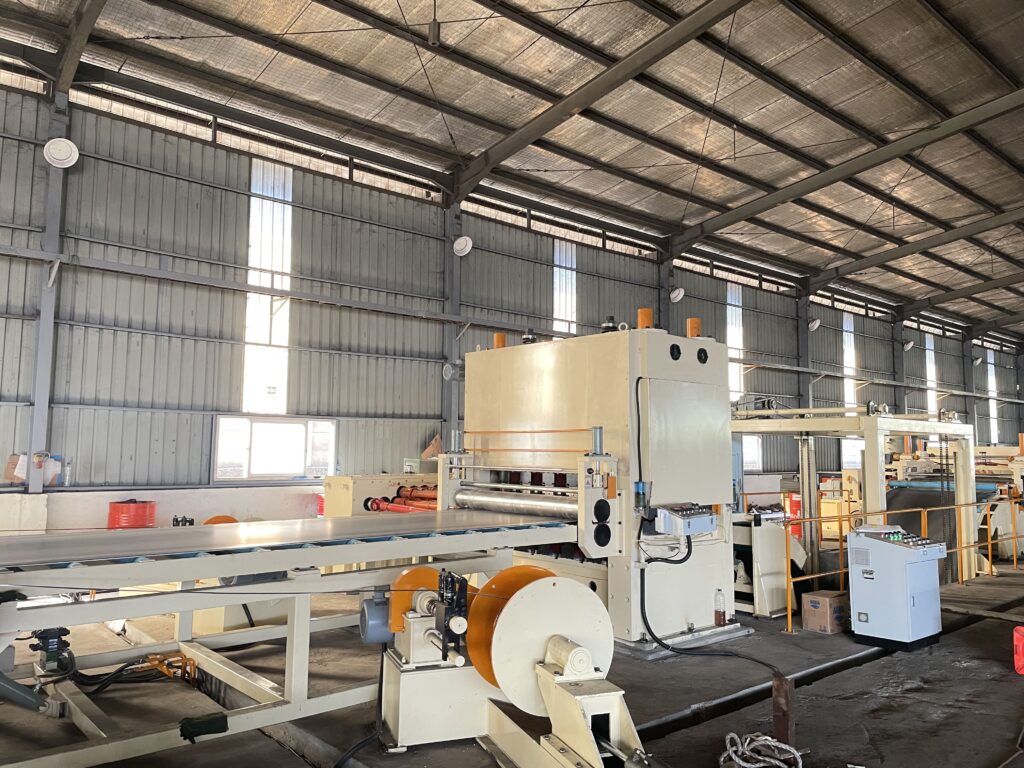
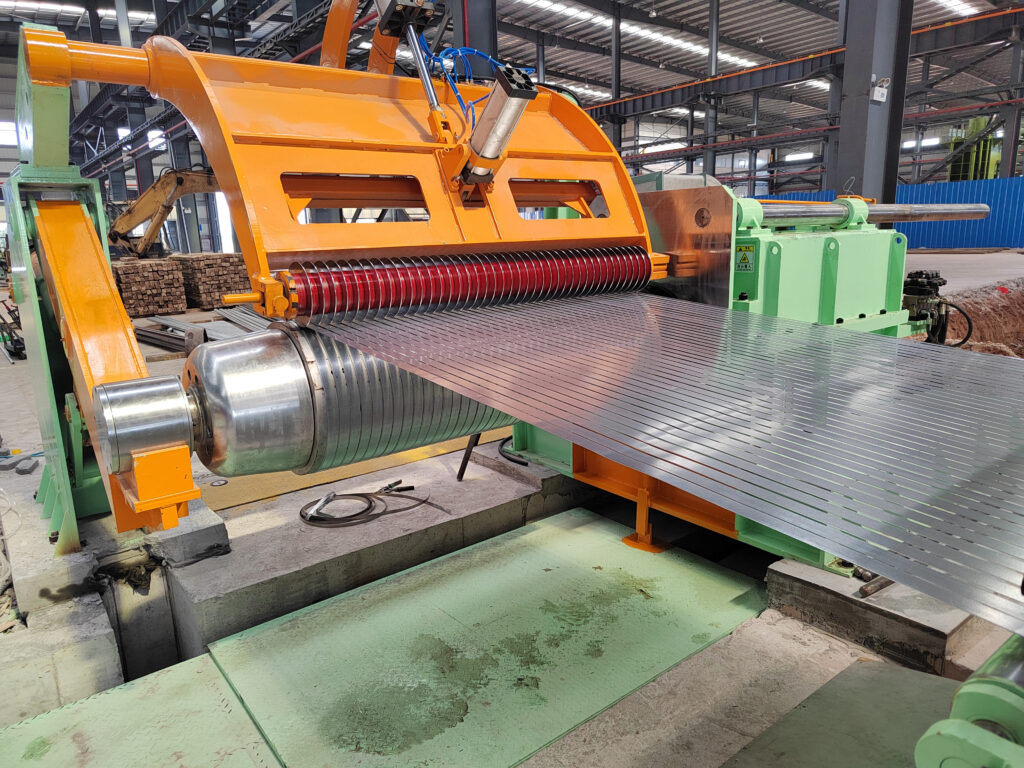
#2. Schuler Group (Germany)
Headquarters: Göppingen, Germany
Specialization: High-speed stamping and forming systems
Speed Capability: Up to 2000 strokes/min in stamping applications
Key High-Speed Capabilities:
- High-speed stamping presses
- Advanced servo press technology
- Rapid die change systems
- High-speed automation integration
- Precision control at maximum speeds
#3. Aida Engineering (USA/Japan)
Headquarters: Dayton, Ohio, USA
Specialization: High-speed stamping and forming equipment
Speed Capability: Up to 1500 strokes/min with servo technology
Key High-Speed Capabilities:
- Servo-driven high-speed presses
- Advanced motion control systems
- High-speed die protection systems
- Precision monitoring and control
- Energy-efficient high-speed operation
#4. Komatsu Industries (Japan)
Headquarters: Tokyo, Japan
Specialization: High-speed precision machinery
Speed Capability: Up to 200m/min in continuous processing
Key High-Speed Capabilities:
- High-speed press systems
- Advanced automation integration
- Precision control systems
- Quality monitoring at speed
- Comprehensive safety systems
#5. Trumpf Group (Germany)
Headquarters: Ditzingen, Germany
Specialization: High-speed laser processing systems
Speed Capability: Up to 300m/min in laser cutting applications
Key High-Speed Capabilities:
- High-speed laser cutting systems
- Advanced beam control technology
- Rapid positioning systems
- Automated material handling
- Precision control at maximum speeds
#6. Amada Holdings (Japan)
Headquarters: Kanagawa, Japan
Specialization: High-speed sheet metal processing
Speed Capability: Up to 180m/min in punching applications
Key High-Speed Capabilities:
- High-speed turret punch presses
- Rapid tool change systems
- Advanced motion control
- High-speed automation
- Precision quality control
#7. Salvagnini Group (Italy)
Headquarters: Sarego, Italy
Specialization: High-speed flexible manufacturing
Speed Capability: Up to 150m/min with flexible processing
Key High-Speed Capabilities:
- High-speed flexible cells
- Rapid changeover systems
- Advanced automation integration
- Intelligent control systems
- Multi-process high-speed operation
#8. Prima Power (Finland/Italy)
Headquarters: Seinäjoki, Finland
Specialization: High-speed laser and punching systems
Speed Capability: Up to 250m/min in combined operations
Key High-Speed Capabilities:
- High-speed combination machines
- Advanced laser technology
- Rapid positioning systems
- Integrated automation
- Precision control systems
#9. Bystronic Group (Switzerland)
Headquarters: Niederönz, Switzerland
Specialization: High-speed cutting and bending
Speed Capability: Up to 200m/min in cutting applications
Key High-Speed Capabilities:
- High-speed laser cutting
- Rapid bending systems
- Advanced automation
- Precision control technology
- Quality monitoring systems
#10. LVD Group (Belgium)
Headquarters: Gullegem, Belgium
Specialization: High-speed sheet metalworking
Speed Capability: Up to 120m/min in processing applications
Key High-Speed Capabilities:
- High-speed press brake systems
- Rapid setup and changeover
- Advanced control systems
- Automation integration
- Precision monitoring
High-Speed Performance Comparison
Speed Capability Comparison
| Supplier | Max Processing Speed | Acceleration Rate | Precision at Speed | Reliability |
|---|---|---|---|---|
| Max Domachine | Up to 180m/min | 50m/min/s | ±0.4mm | 95% |
| Schuler Group | 2000 strokes/min | High | ±0.05mm | 99.5% |
| Aida Engineering | 1500 strokes/min | High | ±0.1mm | 99.0% |
| Komatsu Industries | 200m/min | 67m/min/s | ±0.1mm | 99.2% |
| Trumpf Group | 300m/min | 100m/min/s | ±0.05mm | 99.7% |
Technology Features Comparison
| Feature | Max Domachine | Industry Average | Market Position |
|---|---|---|---|
| Processing Speed | Up to 180m/min | 160m/min | Competitive performance |
| Acceleration | 6 seconds to max | 8 seconds | Moderate improvement |
| Precision | ±0.4mm at speed | ±0.3mm | Standard tolerance |
| Uptime | 92% | 94% | Standard reliability |
| Energy Efficiency | 10% above standard | Standard | Modest improvement |
High-Speed Processing Applications
Automotive Industry Applications
Body Panel Production
- High-Volume Requirements: Processing thousands of panels per day
- Precision Standards: Tight tolerances for fit and finish
- Speed Benefits: 3-5x faster production than conventional systems
- Quality Consistency: Maintained quality at maximum speeds
Structural Component Manufacturing
- Complex Geometries: High-speed processing of complex shapes
- Material Variety: Processing various automotive steels and alloys
- Safety Requirements: Critical safety component specifications
- Production Flexibility: Quick changeover between different components
Electronics Industry Applications
Precision Component Manufacturing
- Ultra-Thin Materials: Processing materials down to 0.1mm thickness
- High Precision: Tolerances down to ±0.05mm
- Clean Room Compatibility: Systems designed for clean environments
- High-Speed Inspection: Real-time quality control at processing speeds
Heat Sink Production
- Thermal Management: Precision processing for optimal heat transfer
- Surface Quality: Superior surface finish requirements
- High-Volume Production: Thousands of units per hour
- Material Efficiency: Minimal waste at high processing speeds
Appliance Manufacturing Applications
Consumer Appliance Components
- Cost-Effective Production: High-speed processing for competitive pricing
- Quality Standards: Consumer-grade quality requirements
- Production Flexibility: Multiple product lines and configurations
- Efficiency Focus: Maximum material utilization and minimal waste
ROI & Productivity Analysis
High-Speed Processing Investment Analysis
Investment Considerations
| Speed Category | Investment Range | Productivity Gain | Payback Period |
|---|---|---|---|
| Ultra-High Speed | $3M – $8M | 300-500% | 18-30 months |
| High Speed | $1.5M – $4M | 200-300% | 24-36 months |
| Medium-High Speed | $800K – $2M | 150-200% | 30-42 months |
| Standard Speed | $400K – $1M | 100-150% | 36-48 months |
Productivity Benefits
Speed-Related Benefits:
- 200-500% increase in processing throughput
- 60-80% reduction in cycle times
- 24/7 operation capability with minimal supervision
- Rapid changeover between different products
Quality Benefits:
- Maintained precision at maximum speeds
- Consistent quality across all production volumes
- Reduced defect rates through advanced control
- Real-time quality monitoring and correction
Cost Benefits:
- 40-60% reduction in labor costs per unit
- 25-35% improvement in material utilization
- 30-40% reduction in energy costs per unit
- Lower maintenance costs through predictive systems
Competitive Benefits:
- Faster delivery times and improved customer satisfaction
- Ability to accept larger orders and contracts
- Enhanced market position through speed capabilities
- Improved profitability through efficiency gains
Total Cost of Ownership for High-Speed Systems
10-Year TCO Analysis
Initial Investment (Year 0):
- Equipment purchase: 70-75%
- Installation and commissioning: 15-20%
- Training and startup: 5-8%
- Facility modifications: 5-7%
Operating Costs (Years 1-10):
- Maintenance and spare parts: 30%
- Energy consumption: 35%
- Operator wages and benefits: 20%
- Software and system updates: 10%
- Insurance and compliance: 5%
Cost Savings (Years 1-10):
- Labor cost reduction: 50%
- Material waste reduction: 20%
- Energy efficiency gains: 15%
- Quality improvement savings: 10%
- Maintenance optimization: 5%
Frequently Asked Questions
How do I determine if my application can benefit from high-speed processing?
The decision to invest in high-speed processing should be based on a systematic analysis of technical and economic factors:
Production Volume Analysis: High-speed equipment typically requires minimum production volumes to justify the investment. Calculate your annual material throughput and compare the cost per unit processed at different speeds. High-speed systems generally become cost-effective when processing more than 1000 tons annually.
Material Compatibility Assessment: Not all materials can be processed effectively at high speeds. Thin-gauge materials (under 2mm) generally perform better at high speeds than thick sections. Work-hardening materials like stainless steel may require specialized handling. Evaluate your material properties and processing requirements carefully.
Quality Requirements vs. Speed Trade-offs: Higher speeds often require accepting slightly relaxed tolerances. If your application requires ±0.1mm precision, verify that suppliers can actually achieve this at their claimed maximum speeds, not just at reduced speeds.
Infrastructure Requirements: High-speed systems require robust electrical supply, precise foundation work, and often climate-controlled environments. Factor these infrastructure costs into your economic analysis.
Downstream Process Compatibility: Ensure that downstream processes can handle the increased material flow. A high-speed processing line is only as fast as its slowest component.
What are the hidden technical challenges in high-speed processing implementation?
High-speed processing involves technical challenges that may not be apparent during initial evaluation:
Dynamic Effects and Vibration: At speeds above 150 m/min, even minor mechanical imbalances create significant vibrations. These vibrations can affect dimensional accuracy, cause premature wear, and create safety hazards. Proper foundation design, precision balancing, and vibration monitoring become critical.
Material Behavior Changes: Materials behave differently at high strain rates. Cutting forces may increase non-linearly, spring-back characteristics change, and work-hardening effects become more pronounced. These changes require process parameter optimization and may affect achievable tolerances.
Control System Complexity: High-speed systems require sophisticated control algorithms to manage acceleration profiles, coordinate multiple axes, and maintain stability. The control system complexity increases maintenance requirements and requires specialized technical support.
Thermal Management: High-speed processing generates more heat through friction, electrical losses, and material deformation. Thermal expansion can affect dimensional accuracy, and cooling systems become more critical.
Emergency Stop Challenges: Stopping high-speed systems safely requires careful engineering. The kinetic energy in a high-speed line can be enormous, and emergency stops must dissipate this energy without damaging equipment or material.
How do I evaluate supplier claims about high-speed capabilities?
Supplier evaluation for high-speed equipment requires careful verification of performance claims:
Speed vs. Accuracy Verification: Request actual test data showing dimensional accuracy at claimed maximum speeds, not just theoretical specifications. Many suppliers quote accuracy figures achieved at reduced speeds.
Material-Specific Performance: Ask for performance data with your specific material grade and thickness. High-speed performance can vary significantly between different materials.
Sustained Operation Capability: Verify that quoted speeds can be maintained during continuous operation, not just during short demonstration runs. Thermal effects and wear patterns may limit sustained high-speed operation.
Reference Customer Verification: Contact reference customers who operate similar applications at high speeds. Ask about actual achieved speeds, reliability, maintenance requirements, and any limitations encountered.
Factory Acceptance Testing: Insist on comprehensive factory testing with your materials at full speed before shipment. This testing should include dimensional accuracy verification, vibration measurement, and extended operation trials.
Making the High-Speed Processing Decision
In 2025, investing in high-speed metal processing machinery demands more than an upfront capital commitment; it requires a strategic alignment of technical capabilities with clear business objectives. Thorough evaluation of material properties and production constraints is essential—ultra-thin stainless steel processing, for instance, demands precision tension controls within ±2% and blade engagement times measured in milliseconds to ensure dimensional integrity at speeds surpassing 200 meters per minute. Not every operation justifies the complexity and costs associated with high-velocity equipment, which typically entails 30% to 50% higher capital expenditure plus increased infrastructure and maintenance investments.
Adopting a phased implementation approach is a proven strategy to mitigate risk and optimize returns: starting with moderate speed increments before progressing to full high-speed operations allows manufacturers to fine-tune process parameters and build operational confidence. Supplier selection should prioritize demonstrated expertise in high-speed applications, supported by rigorous testing capabilities and comprehensive long-term technical service. MaxDo Machine’s MD series exemplifies these standards, combining agile servo-driven controls, multi-zone tension regulation, and advanced automation to deliver both reliability and peak throughput. Ultimately, the right high-speed processing solution—tailored to specific production demands and supported by responsive service—provides enduring competitive advantages through enhanced productivity, material yield, and product quality.
This analysis reflects current market trends and expert insights as of October 2025; verification through direct engagement with suppliers and existing customer references remains critical for informed decision-making.



